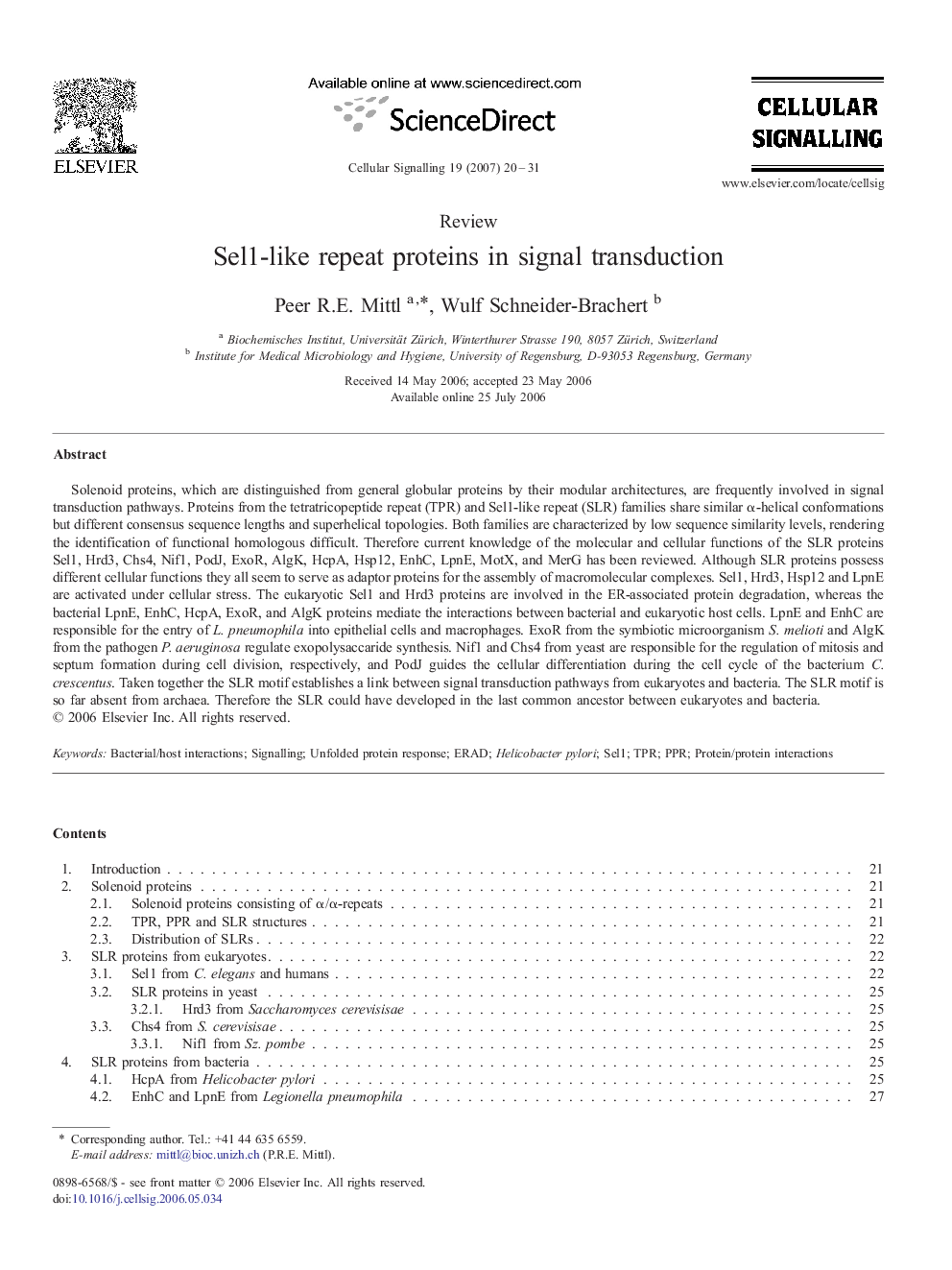| کد مقاله | کد نشریه | سال انتشار | مقاله انگلیسی | نسخه تمام متن |
|---|---|---|---|---|
| 1964341 | 1058544 | 2007 | 12 صفحه PDF | دانلود رایگان |

Solenoid proteins, which are distinguished from general globular proteins by their modular architectures, are frequently involved in signal transduction pathways. Proteins from the tetratricopeptide repeat (TPR) and Sel1-like repeat (SLR) families share similar α-helical conformations but different consensus sequence lengths and superhelical topologies. Both families are characterized by low sequence similarity levels, rendering the identification of functional homologous difficult. Therefore current knowledge of the molecular and cellular functions of the SLR proteins Sel1, Hrd3, Chs4, Nif1, PodJ, ExoR, AlgK, HcpA, Hsp12, EnhC, LpnE, MotX, and MerG has been reviewed. Although SLR proteins possess different cellular functions they all seem to serve as adaptor proteins for the assembly of macromolecular complexes. Sel1, Hrd3, Hsp12 and LpnE are activated under cellular stress. The eukaryotic Sel1 and Hrd3 proteins are involved in the ER-associated protein degradation, whereas the bacterial LpnE, EnhC, HcpA, ExoR, and AlgK proteins mediate the interactions between bacterial and eukaryotic host cells. LpnE and EnhC are responsible for the entry of L. pneumophila into epithelial cells and macrophages. ExoR from the symbiotic microorganism S. melioti and AlgK from the pathogen P. aeruginosa regulate exopolysaccaride synthesis. Nif1 and Chs4 from yeast are responsible for the regulation of mitosis and septum formation during cell division, respectively, and PodJ guides the cellular differentiation during the cell cycle of the bacterium C. crescentus. Taken together the SLR motif establishes a link between signal transduction pathways from eukaryotes and bacteria. The SLR motif is so far absent from archaea. Therefore the SLR could have developed in the last common ancestor between eukaryotes and bacteria.
Journal: Cellular Signalling - Volume 19, Issue 1, January 2007, Pages 20–31